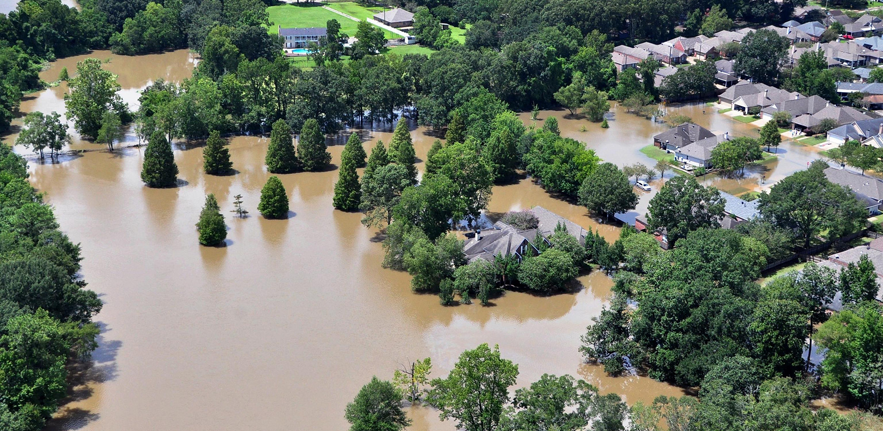
Louisiana floods highlight the protection gap
Tom Herbstein, Senior Programme Manager, ClimateWise, Cambridge Institute for Sustainability Leadership
2 September 2016
The current Louisiana floods, with over 40,000 homes damaged, have been described by the Red Cross as the worst US disaster since Hurricane Sandy. Yet, Louisiana Insurance Commissioner Jim Donelon estimates that in many regions only 12–14 per cent of flooded properties have adequate insurance cover. Aside from those directly impacted by the floods, this raises serious questions about the role of the insurance industry.
The insurance sector is widely regarded as society’s risk manager, helping to transfer exposure to sudden and unexpected risks into larger and diversified risk pools. This role has helped the industry to underpin many elements of modern economies, reflected in the direct correlation between the size of a domestic insurance industry and the strength of a country’s GDP.
However, with the growing impacts of climate-related risks, many perils previously regarded as sudden and unexpected are now increasingly probable and predictable. Consequently, many previously insurable assets have become uninsurable, or those already underinsured further compromised.
This growing divide between societal exposure to climate risk and a comparative decline in insurance penetration has been termed the protection gap. Recent research by Swiss Re has found that this protection gap currently stands at around $1.3 trillion globally. This means almost 70 per cent of catastrophic losses are being borne by individuals, firms and governments and not by the insurance sector, as we now see in Louisiana where the Insurance Commissioner has called the low insurance penetration figures ‘shocking’.
From an industry perspective, the protection gap presents two distinct challenges. First, as the number of insurable assets declines, industry competition increases and pressure grows on profit margins already under pressure due to the current ‘soft’ market conditions. Second, as the protection gap widens – especially when considering underinsured emerging economies – the industry’s relevance as society’s risk manager is comes under pressure. As a result, the industry’s influence could be undermined, leading to pressure from policymakers and regulators to underwrite risks that are actuarially unsound. In Florida, following Hurricane Katrina, regulators came under pressure from the local electorate after a significant increase in premiums. This led to the industry being regulated to maintain rates at below actuarially sound levels. Some insurers withdrew from the local market, affecting their own operations and the resilience of local homeowners, sometimes unable to secure adequate cover.
Consequently, insurers are beginning to question whether their traditional underwriting approaches are sufficient in light of the protection gap. While it is crucial in helping them to manage their exposure over the short term, over the longer term, as the frequency and impact of climate risks intensify, insurance could become less available or affordable for larger parts of society. A strategy of simply withdrawing from high-risk markets will only exacerbate the protection gap and further undermine the relevance of insurance as a long-term risk manager.
Some leaders within the industry have acknowledged that the insurance sector must become more proactive in helping society build resilience to climate risks. As a result, many insurance industry organisations are exploring ways the industry can address the protection gap – including the Insurance Development Forum (IDF), the Geneva Association and ClimateWise (the insurance industry leadership platform facilitated by the Cambridge Institute for Sustainability Leadership). Together these organisations are examining all aspects of the industry’s value chain, to understand where, within their risk carrying, risk management and investment activities there is scope to help enhance societal resilience to climate risks, like flooding.
Can insurers start to invest, for example, in ways that could reduce risk on the underwriting side of their business, in areas like resilience-enhancing infrastructure (eg flood defences) or in ‘green’ bonds? How can insurers support local governments to make more-informed development decisions by drawing on their extensive data sets and risk management expertise? And, how could the regulatory environment empower the industry to support other parts of the financial system in its response to climate risk (like environmentally stress-testing mortgage portfolios)?
What’s clear is that if the protection gap is to be addressed, and the negative impacts of events like Louisiana minimised, insurance has to become more proactive and collaborative with other stakeholders including policymakers, regulators, local governments and civil society. By helping to close the protection gap, a more resilient, and potentially more profitable, insurance industry will emerge.
First published on Insurance Day (subscription required).





